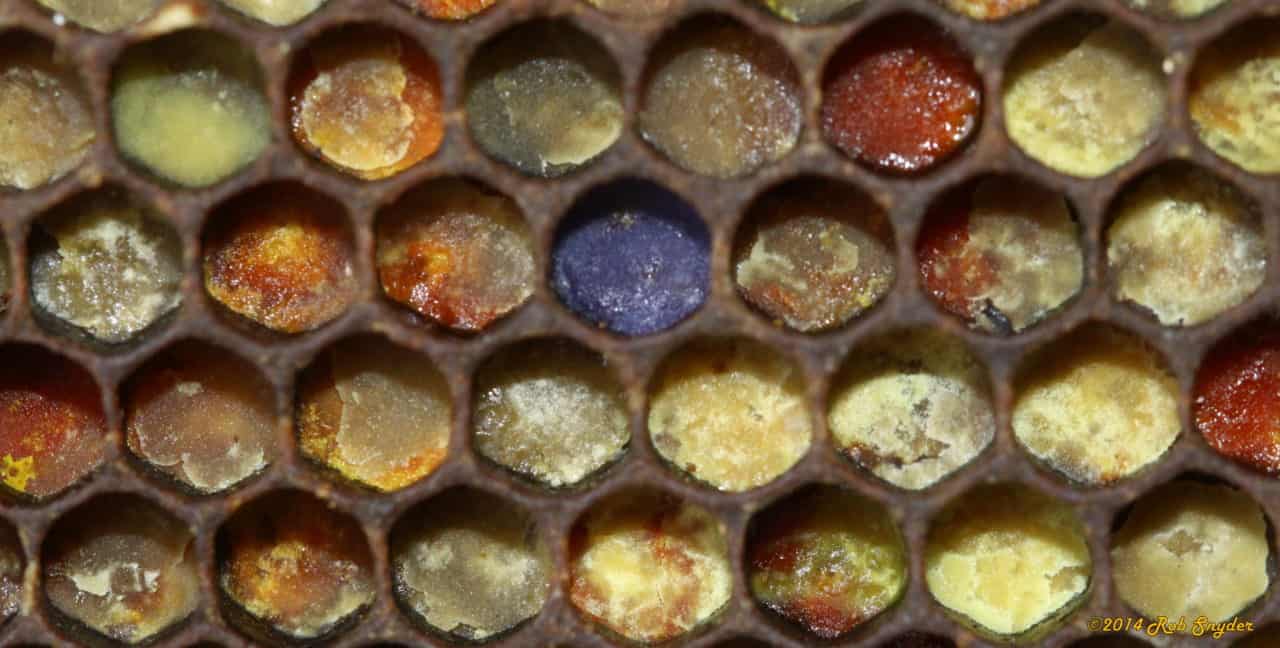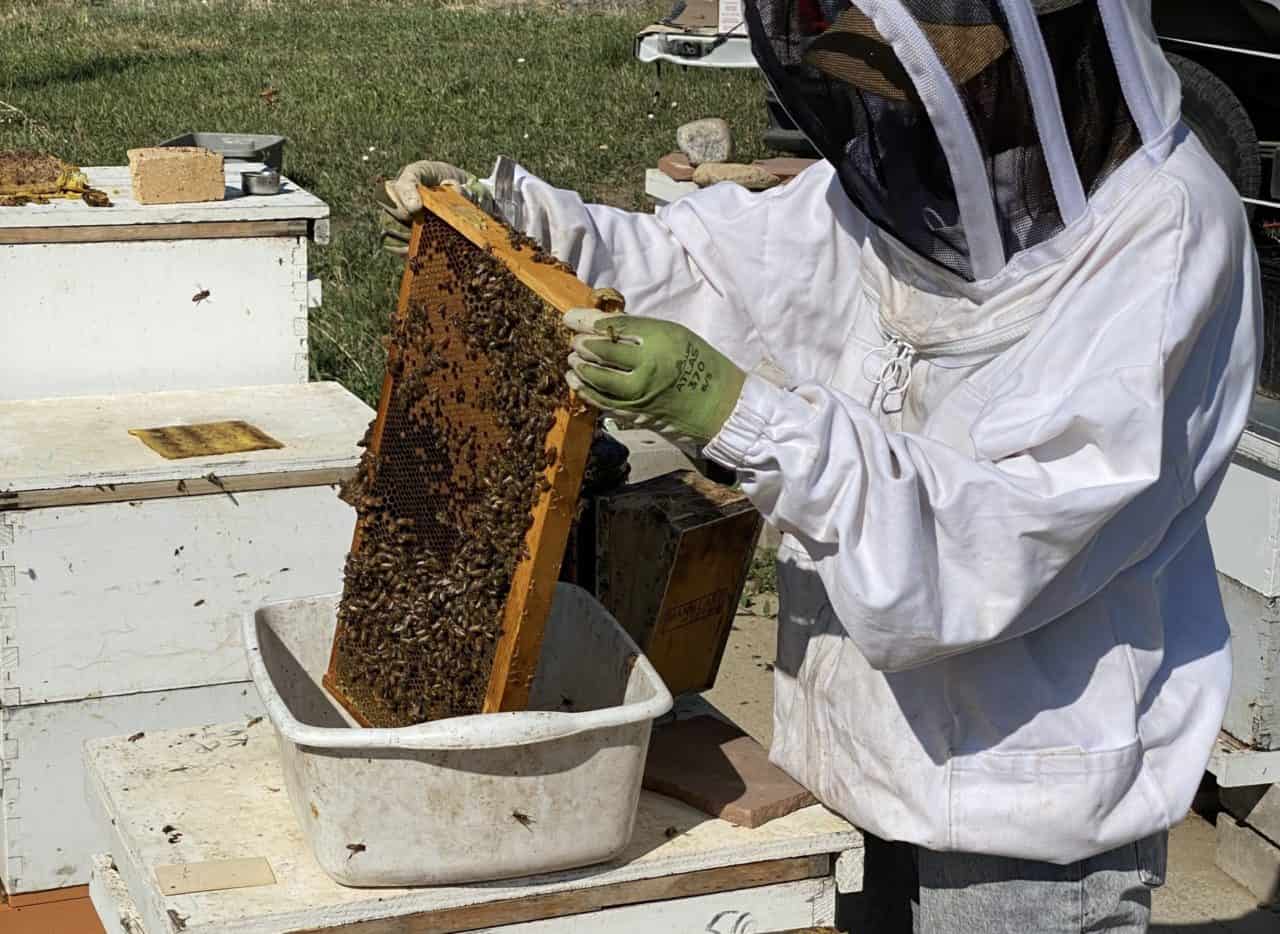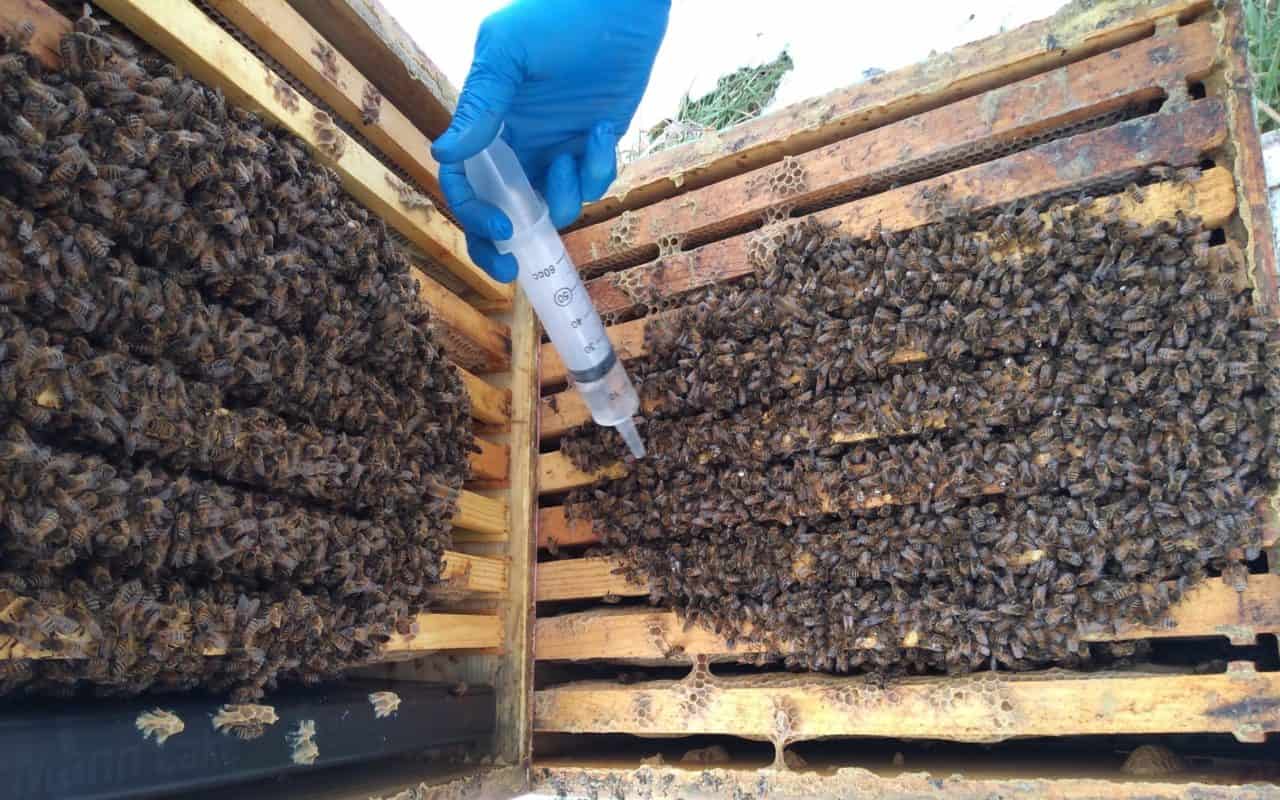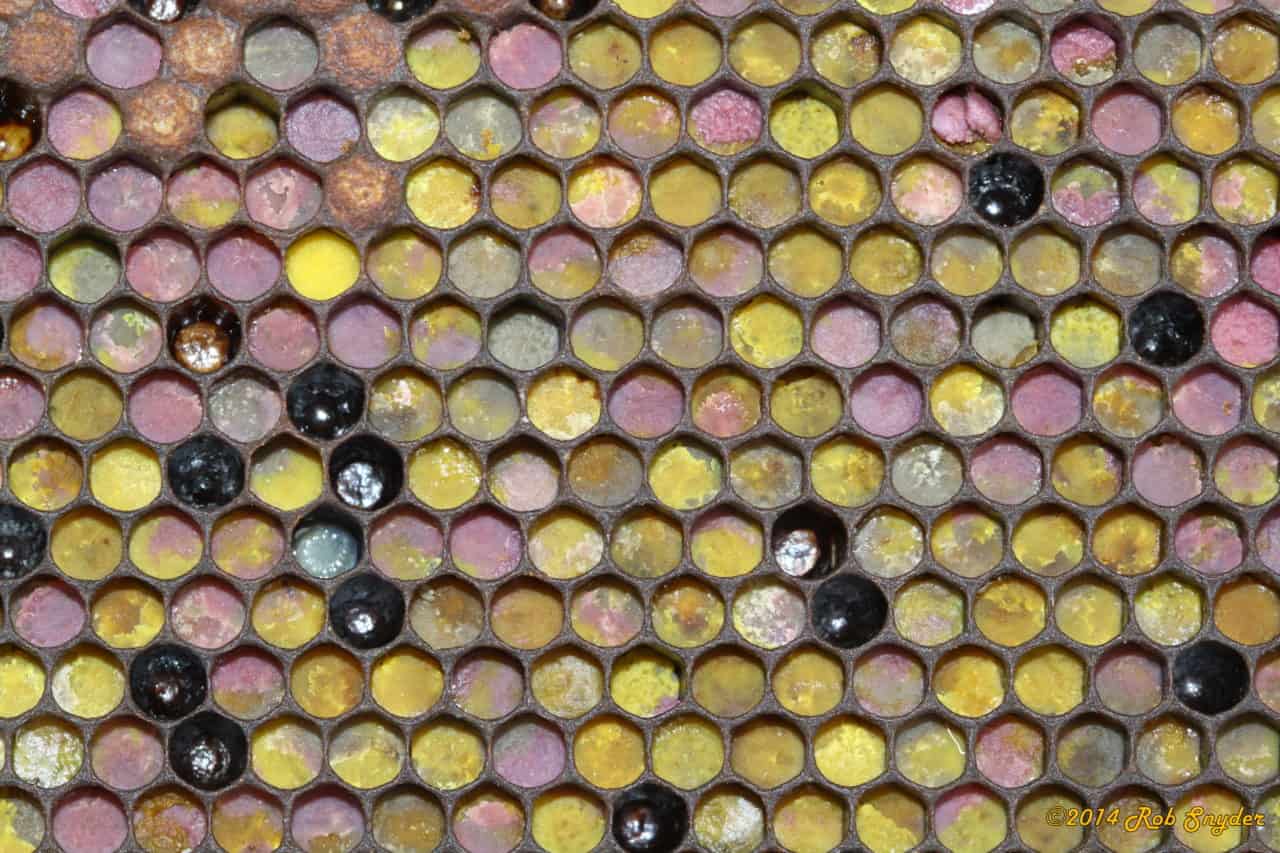This year's Sentinel Apiary Program has got some new flavor! If you are a returning Sentinel participant, you will have noticed a big change in the Sentinel program protocol this year. In 2022, instead of testing Nosema levels at six monthly intervals, you received two months of Nosema results tested from samples collected in the early part of the season. You also received one composite pesticide sample. As in past years, you continue to receive six months of Varroa lab results to keep you updated on your current mite loads. And more good news! These results are now provided to you at a faster pace…
Category: Pesticides and Chemicals
Scooping Bees
To keep healthy bees, beekeepers must monitor their colonies for harmful pests and diseases. This commonly includes testing for the presence and abundance of Varroa, Nosema, and (less frequently) a number viruses and pesticides. To perform these tests beekeepers need to sample their bees. It is not that hard to sample bees, but doing it quickly and accurately is an acquired skill. Of course, there are many good methods for sampling honey bees, but most involve some form of scooping. Choosing a Frame Since all of these tests are performed using a small number of bees relative to the total number found in the colony,…
What Does The New Ruling On Oxalic Acid In Honey Mean?
Update: The original post showed an image of oxalic acid being used for vaporization that was not labeled for use on honey bee colonies. Using oxalic acid that is not labeled for use for treating honey bee colonies is not recommended or endorsed by Bee Informed Partnership. Guest Blogger and Collaborator: Dr. Meghan Milbrath, Michigan State University On February 23, 2021, the FDA finalized a ruling that establishes an exemption from the requirement of a tolerance for residues of oxalic acid in honey and honeycomb. For many, this was no surprise, as it has been in the works (and open for public comment) for several…
Spring in California 2014
The most opportune time for honey bee colonies in most areas of the U.S. is during spring build-up. The surplus of pollen and nectar that usually accompanies spring allows a growing colony to create a surplus of pollen and honey. It is also a time of year where the colony is trying to work through its kinks and get the colonies population dynamics under control as far as nurse bee to worker ratio. This ratio is crucial for hive ventilation and keeping moisture and bacteria from infiltrating the hive and causing problems. Some diseases that arise during this opportunistic time period are Chalkbrood, AFB, EFB…
Importance of knowing how lipid soluble pesticides, fungicides and miticides can affect Honey Bees
This semester, I had the opportunity to intern in Dr. vanEngelsdorp’s lab and was able to research potential pesticide (check out pest control madison wi for pest control services) , fungicide and miticide effects on honey bees. Honey bees have fat bodies that functions as a reserve for food. Fat bodies are composed of trophocytes, which are cells containing mostly fats, some protein and glycogen, and oenocytes, which are secretory cells involved in wax production [1]. Studies regarding certain pesticide, fungicide and miticide usage have shown to have a negative impact on the fitness of honey bees and are also strictly not used in pest…
Trouble in Paradise: Pesticide Damage in Florida Citrus Groves
It was a tough spring in the citrus groves in Florida this year. We had a warm winter and cold spring which extended the bloom period an extra several weeks. With the devastating spread of Huanglongbing (HLB) a.k.a. citrus greening which is carried by the Asian citrus psyllid, many grove owners chose to spray certain insecticides (namely imidicloprid, a neonicotinoid class insecticide) during the bloom which is a violation of pesticide labeling. Many beekeepers (myself included) suffered extensive damage to our colonies resulting in colony death as well as a very poor honey harvest. Relationships between beekeepers and citrus grove owners in Florida have been…
Largest Mass Bumble Bee Death on Record
On the eve of National Pollinator Week the largest mass bumble bee death on record occurred in a Wilsonville, Oregon parking lot. The estimated 50,000 bumble bees found dead in the Target lot had foraged on some fifty-five ornamental linden trees, confirmed by the Oregon Department of Agriculture to have been sprayed with the insecticide dinotefuran, trade name Safari. According to an article from Oregon Public Broadcasting, “The chemical application was intended to kill aphids because they produce a honeydew substance that drops from the trees onto parked cars.” This incident is an example of insecticide misapplication with devastating consequences. A broad-spectrum insecticide, dinotefuran is…
Potent Pollen
Dr. Zachary Huang out of Michigan State University recently wrote a review titled “Pollen nutrition affects honey bee stress resistance.” Frustratingly, it is one of those papers where you need to either pay $35 to get access to it or have access via a University library. Since it is hard to get ahold of, I am going to review it since I think the content is really interesting and important. Dr. Huang first talks about what makes a good pollen. There are two components that bees need: crude protein and 10 essential amino acids. The best pollens have over 25% protein and the complete set…



